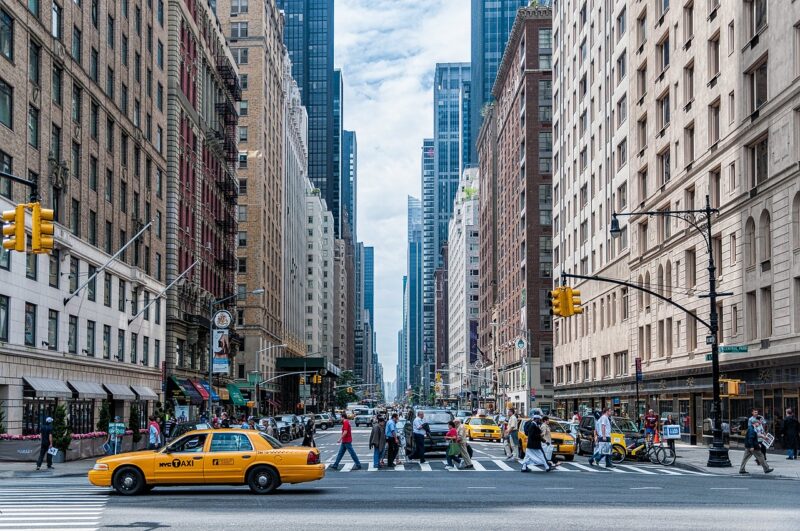The Challenge of Keeping the World’s Roads Safe and Free from Congestion
November 11, 2024

As cities grow and populations swell, the state of our roads is increasingly put to the test. Traffic congestion and road safety are mounting issues confronted by planners and policymakers alike. Understanding the challenges and exploring potential solutions is crucial for developing efficient transportation systems that meet modern demands. In this article, we dive into the various factors contributing to road safety and congestion, and what can be done to alleviate these pressing issues.
1. The Growing Problem of Urban Congestion
Urban areas are rapidly expanding, leading to unprecedented levels of congestion. In the United States alone, traffic congestion costs the economy around $87 billion a year in lost productivity. Congestion results from several factors:
- Population Growth: As more people flock to urban centers, the number of vehicles on the road skyrockets. A recent study predicts that global urban populations will reach 68% by 2050, intensifying existing congestion issues.
- Inadequate Infrastructure: Many cities haven’t expanded their infrastructure to match growth. Aging roads, limited public transport options, and poorly designed intersections contribute to bottlenecks and delays.
- Increased Vehicle Ownership: Higher disposable incomes in developing countries lead to increased vehicle ownership. More cars on the road typically mean more congestion, especially during peak hours.
- Insufficient Public Transport Systems: When public transport options are limited or unreliable, more individuals opt for personal vehicles, further worsening congestion.
2. Road Safety: A Critical Concern
While congestion is frustrating, safety remains the most critical concern on our roads. The World Health Organization reports that approximately 1.35 million people die each year due to road traffic accidents.
Factors contributing to road safety issues include:
- Distracted Driving: With the rise of smartphones, distracted driving has become one of the leading causes of accidents. Simple actions like texting or using navigation apps can remove attention from the road, resulting in devastating consequences.
- Driving Under the Influence: Alcohol and drug use continue to be a significant problem contributing to fatal accidents. Despite numerous campaigns, many continue to drive under the influence, jeopardizing their safety and that of others on the road.
- Poor Road Conditions: Potholes, poorly marked lanes, and unclear signals pose hazards. Poor infrastructure maintenance can turn everyday commutes into dangerous drives.
- Inexperienced Drivers: Rising numbers of newly licensed and inexperienced drivers can contribute to an increase in accidents. Education and training are vital for improving safety awareness.
3. Technological Innovations for Safer Roads
Technological advancements have been a game-changer in tackling road safety and congestion issues. Some key innovations include:
- Smart Traffic Management Systems: Cities are now using AI-driven technology to manage traffic flow. By analyzing real-time data, traffic lights can be adjusted to reduce wait times and improve overall efficiency.
- Connected Vehicles: The rise of connected vehicles—cars that communicate with each other and infrastructure—helps improve road safety. These vehicles can alert drivers to potential collisions or traffic jams ahead, allowing them to make informed decisions.
- Navigation Apps: Tools like Waze provide real-time updates on traffic conditions, helping users reroute to avoid congestion. These apps have been instrumental in disseminating information that ultimately leads to safer journeys.
- Driver Assistance Systems: Features like lane-keeping assist, adaptive cruise control, and automatic emergency braking are becoming increasingly standard. These capabilities aid in preventing accidents by offering support and intervention when necessary.
4. Policy Changes and Urban Planning
To effectively address road safety and congestion, policymakers must also take decisive action. Key approaches include:
- Investing in Infrastructure: Prioritizing road maintenance and expansion of public transportation assets can significantly alleviate congestion. Investing in bicycle lanes and pedestrian pathways also promotes alternative forms of transport, which can enhance road safety overall.
- Implementing Congestion Pricing: Cities like London and Singapore have successfully implemented congestion pricing, charging drivers a fee to enter congested areas during peak times. This discourages unnecessary trips and promotes the use of public transportation.
- Educating Drivers: Comprehensive education programs focusing on the dangers of distracted driving, substance abuse, and road safety protocols are essential in creating a culture of safety on the road.
- Encouraging Smart Growth: Effective urban planning should focus on creating high-density housing near public transport hubs. This reduces reliance on personal vehicles and curbs congestion while promoting sustainable living environments.
5. The Role of Community Engagement
Community involvement is paramount in the journey toward safer, less congested roads. Some efforts include:
- Public Forums: Organizing discussions enables citizens to voice opinions and concerns regarding traffic safety and congestion. Engaging locals ensures that policies reflect community needs, leading to better outcomes.
- Involving Schools: Educational programs in schools can promote road safety awareness from a young age. Educational initiatives can include safe walking and cycling practices, which can help reduce overall traffic in areas near schools.
- Partnership with Local Organizations: Collaborating with nonprofits, charities, and local groups can create programs focusing on traffic safety campaigns and initiatives addressing congestion problems.
Conclusion: A Collaborative Approach is Key
The dual challenges of road safety and congestion require a multifaceted approach involving technology, policy changes, community engagement, and individual responsibility. By embracing innovative solutions, investing in infrastructure, and encouraging public participation, we can make our roads safer and more efficient.
Only through collaboration can we hope to combat the congestion crisis and create safer roadways for future generations. With our growing global population and the emergence of new transport technologies, maintaining our road networks’ safety and effectiveness is not just a challenge; it is a necessity for ensuring our cities remain vibrant and functioning.
If we can work together as concerned citizens, innovators, and policymakers, the challenge can transform into an opportunity—a chance to revolutionize how we travel, work, and live.






